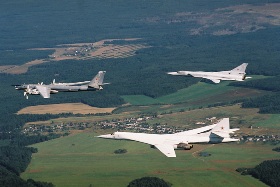Airport, EU – Baltic States, Latvia, Technology, Transport
International Internet Magazine. Baltic States news & analytics
Friday, 16.01.2026, 00:31
Top trends in aviation for 2011 and outlook for 2012
 Print version
Print versionKey trends in 2011
 |
|---|
Fuel price increases. Early December, jet fuel price stood at close to 125 USD per barrel, or 20% higher than a year earlier; the higher fuel price is estimated to cost extra USD 60 billion to airlines around the world. The increased fuel price and fragile economic recovery dents into the profits of European airlines.
Consolidation of airlines continues. To gain from economies of scale and respond to cost increases, consolidation of airlines continues. Examples include Southwest/AirTran in the US, Cimber/CityAirline/Skyways in Northern Europe, and Aerosvit/Dniproavia/Donbassaero in Eastern Europe.
Challenges for airlines remain. Cost surges and relatively weak markets make airlines more exposed to risks and difficulty. American Airlines has filed for Chapter 11 protection, Russian low-cost carrier Avianova discontinued operations, while India’s Kingfisher and Spicejet entered a period of difficulty.
Airport infrastructure for future growth. In the 21st century, aviation is the main driver of economic growth, and sufficient infrastructure is required to accommodate future passenger flows. Several large airport infrastructure projects around the world, like those in Doha or Berlin, have entered their completion stage, to soon become ready to serve the traveller. Riga Airport is part of the trend with its almost EUR 200 million earmarked for infrastructure development, an investment required to continue offering excellent service, even if the next decade again sees doubling of passenger numbers travelling via North Hub Riga to/from destinations in Europe, Scandinavia, Middle East, Russia/CIS.
Revolutionary aircraft technology becomes reality. Boeing 787 Dreamliner entered into service this year with the Japanese carrier ANA. Despite criticism for long delays, it is a revolutionary design, and airlines will benefit from its efficiency gains, to respond to cost increases.
Large orders for modern aircraft. Modern and efficient aircraft are good news for both the environment, and airlines saving on fuel cost and making tickets more affordable. This year, AirAsia made the largest Airbus order in history for A320neo, while Southwest ordered 150 pieces of Boeing 737Max aircraft, this order being Boeings largest by value in its history, the B737 family aircraft with a new engine.
Aggressive market entrants. Markets with proven demand have this year seen new aggressive entrants like Scoot, a new low-cost carrier of Singapore Airlines, or Flybe in the Baltic/Nordic region. This new competition is not only good news for the consumer, but also makes life difficult for very small regional airlines with few aircraft, and incentivises them to explore new areas of business, for example, introduce connecting flights for potential transit passengers.
Key trends in 2012
Eurozone crisis to dilute travel. The current eurozone crisis dilutes consumer confidence for the next year’s travel, thus fewer bookings are expected. The eurozone crisis also makes dollars more expensive for European airlines that pay a large portion of their bills in dollars.
Ancillary revenues to grow. Airlines around the world will seek to maximise their income by boosting ancillary revenue to offset cost increases. Customers will enjoy a wide array of services and innovations from paid internet on flights to probably such experiments as real estate sold during the flights, and much more.
Personalisation of services and multipartner loyalty programmes. Airlines will be more active to benefit from sophisticated multi-partner loyalty programmes. Unlike frequent flyer programmes, which essentially offer discounted flights, multipartner loyalty programmes offer greater insights in services and products that customers prefer. Buying behaviour and purchase history enables better segmentation of customers and more personalised offers. Multipartner loyalty programmes, combined with the power of social media, will one day offer airline passengers to take a flight that has been chosen by their friends in Facebook, or a recommendation to visit a fish restaurant during their trip, if they frequently purchase fish food in a supermarket that participates in the loyalty programme.
Fleet modernisation to continue. The sustained high fuel costs will further incentivise airlines to upgrade their fleets with new generation jet and turboprop aircraft.
Taxation to become a greater burden for passenger. States see more opportunities to fill their coffers at the expense of air traveller, and 2012 will see the introduction of the Emissions Trading Scheme, increased air passenger duties in a number of states, and new security fees in others.
airBaltic serves over 60 destinations from its home base at Riga, Latvia. From every one of these, airBaltic offers convenient connections via North Hub Riga to its network spanning Europe, Scandinavia, Russia, CIS and the Middle East.








 «The Baltic Course» Is Sold and Stays in Business!
«The Baltic Course» Is Sold and Stays in Business!

